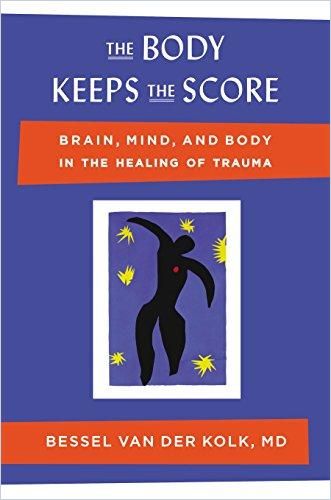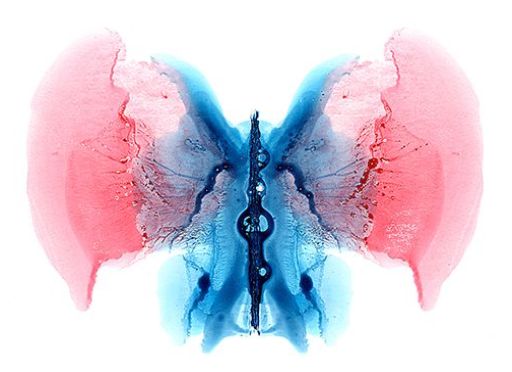Director of the Complex Trauma Treatment Network Bessel van der Kolk, MD details how trauma manifests in the body and current therapy modalities that address it.

Trauma and the Body
Director of the Complex Trauma Treatment Network Bessel van der Kolk, MD, teaches psychiatry at the Boston University School of Medicine. He writes with compassion for patients suffering from Post-Traumatic Stress Disorder (PTSD) seeking to manage their lives as internal fires rage. Bessel van der Kolk explains PTSD, offering insights about trauma, its impact on survivors and therapies doctors utilize to help traumatized patients cope with their trauma.
Post-Traumatic Stress Disorder (PTSD)
The American Psychiatric Association (APA) recognized PTSD as a diagnosis in 1980 after research into combat veterans’ nightmares, flashbacks, uncontrollable rages and emotional withdrawal. These behaviors inadvertently replicate the patient’s traumatic experience.
The mere opportunity of escape does not necessarily make traumatized animals, or people, take the road to freedom. Bessel van der Kolk
Danger triggers a whole-body response that activates survival triggers in the brain until, through fight, flight or freeze, the person reaches safety. Once out of danger, the body regains equilibrium. But if someone can’t escape the stressor, his or her brain keeps pumping out stress hormones. The body stays on high alert.
The Brain
Random events trigger flashbacks and patients cannot control their duration. The brain’s thalamus collects sensory data to create autobiographical memory. It goes offline during traumatic events; afterward the brain recalls events in sensory and emotional snippets. The thalamus filters distractions, fueling concentration, attention and learning. When trauma compromises the thalamus, these tasks become more difficult.
The amygdala is like the brain’s smoke detector and the medial prefrontal cortex (MPFC) is its lookout tower. When the amygdala raises an alarm, the MPFC returns the body to calm by short-circuiting the stress response. For those suffering PTSD, balance between extreme reaction and calm acceptance goes awry.
Trauma affects the emotional brain – made up of the limbic system above the reptilian brain – and talk therapy, the author explains, cannot change the reality it lives.
Trauma by nature drives us to the edge of comprehension, cutting us off from language based on common experience or an imaginable past.Bessel van der Kolk
Frontal lobes – the seat of abstract thought, long-term planning and language – impede giving in to impulses, but forceful emotional brain input overwhelms the rational brain.
Parental Love
Children raised with parental love feel a basic safety, which enables them to focus and learn. Traumatized kids, however, find triggers everywhere. Children who grow up with abuse or being ignored later may feel – when others abuse or neglect them – that they deserve such treatment.
If you lack a deep memory of feeling loved and safe, the receptors in the brain that respond to human kindness may simply fail to develop.Bessel van der Kolk
Lovingly raised children learn they have agency even in difficult circumstances. Traumatized kids learn they can do nothing to change their caregivers’ toxic responses. Kind words and feelings from people important to them calms PTSD patients, who find being ignored enraging or a source of despair.
PTSD Misdiagnoses
In psychiatry, diagnosis precedes and informs care. Patients suffering PTSD may receive unrelated diagnoses such as bipolar disorder, for which doctors may prescribe lithium. Or they may receive a diagnosis of depression, which doctors treat with antidepressants. ADHD patients receive stimulants.
An erroneous diagnosis influences patient self-perception. Insurers require a diagnosis that appears in the Diagnostic and Statistical Manual of Mental Disorders (DSM). This, even though the book – a cash cow for the American Psychiatric Association (APA) – explicitly states not to apply its content to that purpose.
Bessel van der Kolk and his colleagues suggested a new DSM subcategory, “Complex PTSD,” to describe “interpersonal trauma,” but the DSM rejected their findings. Left without an accurate diagnosis, physicians couldn’t devise effective treatments.
High ACE scores turned out to correlate with higher workplace absenteeism, financial problems and lower lifetime income.Bessel van der Kolk
In 2001, Congress established the National Child Traumatic Stress Network (NCTSN) to coordinate research and develop treatment for traumatized children. Via NCTSN, experts proposed a new diagnostic class: “Developmental Trauma Disorder.” Again, the APA rejected it, claiming it addressed too small a niche.
Traumatic Memories
When victims of abuse sued the Catholic Church for the crimes of their priests, for example, court cases pitted memory experts against one another. Some critics of the lawsuits maintained that overly sympathetic psychiatrists implanted false memories in people claiming to be victims.
Memory loss has been reported in people who have experienced natural disasters, accidents, war trauma, kidnapping, torture, concentration camps, and physical and sexual abuse.Bessel van der Kolk
Recovered memories may differ slightly from patients’ accounts or memories at the time of the trauma, but prove reliable regarding facts. Trauma memories are disorganized. By contrast, van der Kolk details, happy memories show superior organization; patients recall them as stories with a beginning, middle and end. And, significantly, patients recall them as decisively part of the past, not as recurring events.
A Safe Context
Trauma emerges from the emotional brain through physical symptoms: Twisted guts, rapid heart rate, bad posture and more. Mindfulness training can bring patients into awareness of bodily sensations. Contact with people patients trust brings calm and healing.
While we don’t yet know precisely how EMDR [Eye Movement Desensitization and Reprocessing] works, the same is true of Prozac.Bessel van de Kolk
Therapeutic massage grounds PTSD patients in their bodies and relaxes them. MDMA/Ecstasy – and psychedelic drug therapies – in conjunction with psychotherapy, allow patients to recall traumatic events without reliving them. Experimenting with yoga and breathing helps them attune to how their body feels. Bessel van der Kolk recommends all of these therapies.
Trauma Guidebook
This is not a therapeutic or self-help text. Bessel van der Kolk doesn’t intend his book to replace the numerous therapies or approaches he delineates. Trauma is his milieu, and he offers an immersive overview of traumas – and PTSDs – manifestations, processes, biological functions and possible treatments. His voice is compassionate and scholarly, as befits his target reader: a layperson dealing with trauma or trying to help a loved one suffering from it.
Bessel van der Kolk, MD, with Peter A. Levine, PhD, co-wrote Trauma and Memory; and with Elizabeth A. Stanley, PhD, co-wrote Widen the Window: Training Your Brain and Body Thrive During Stress and Trauma.





